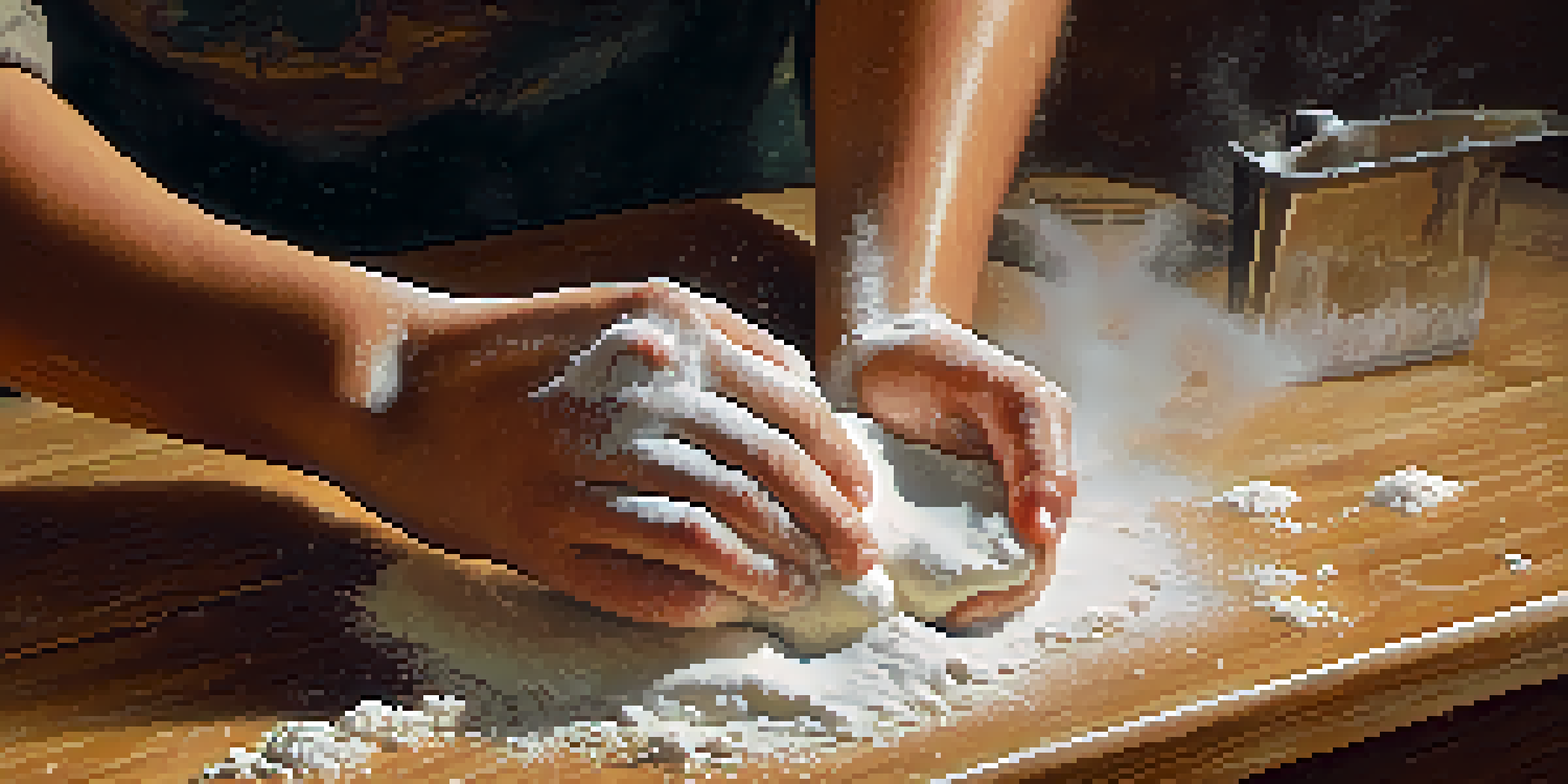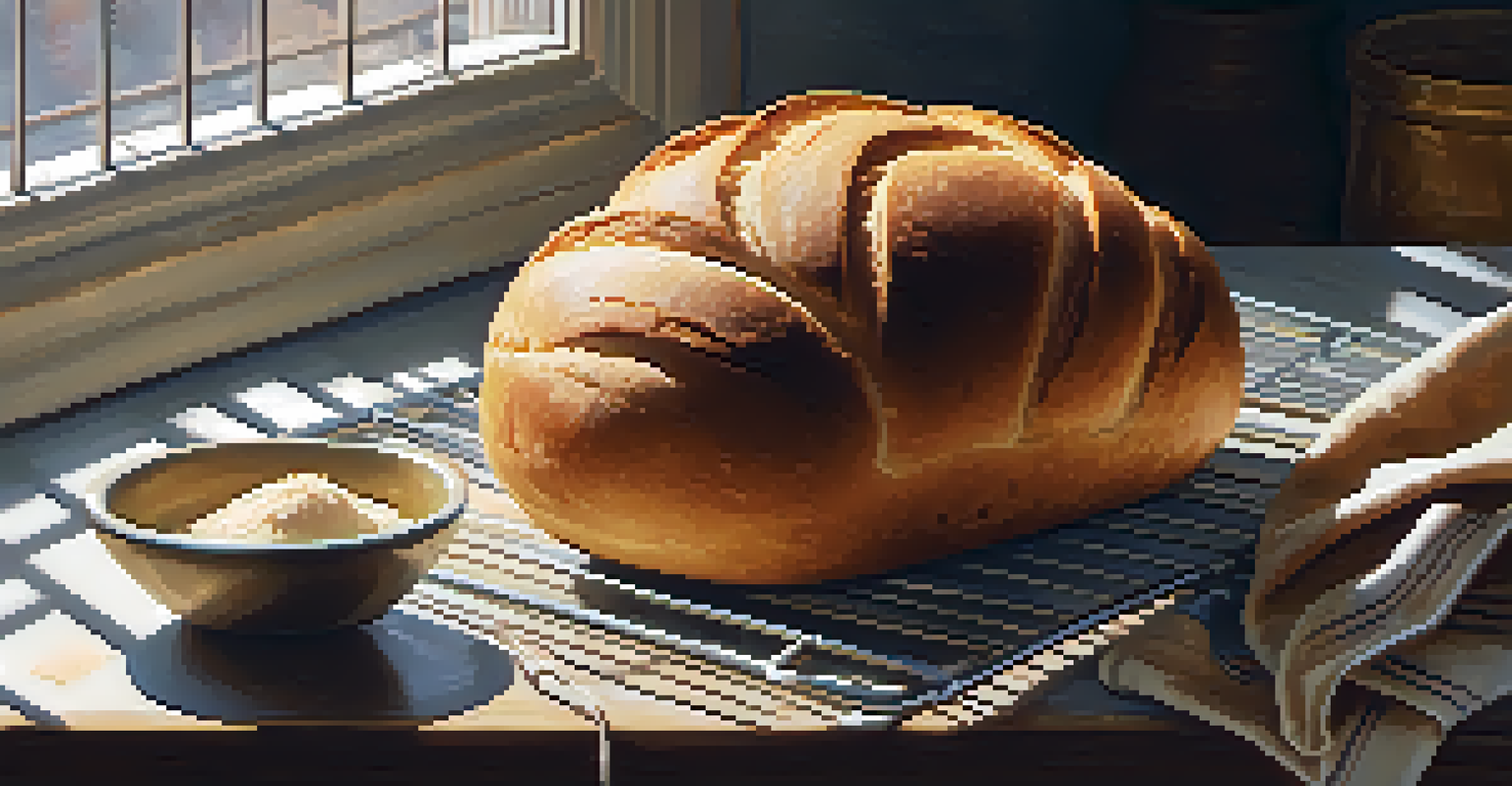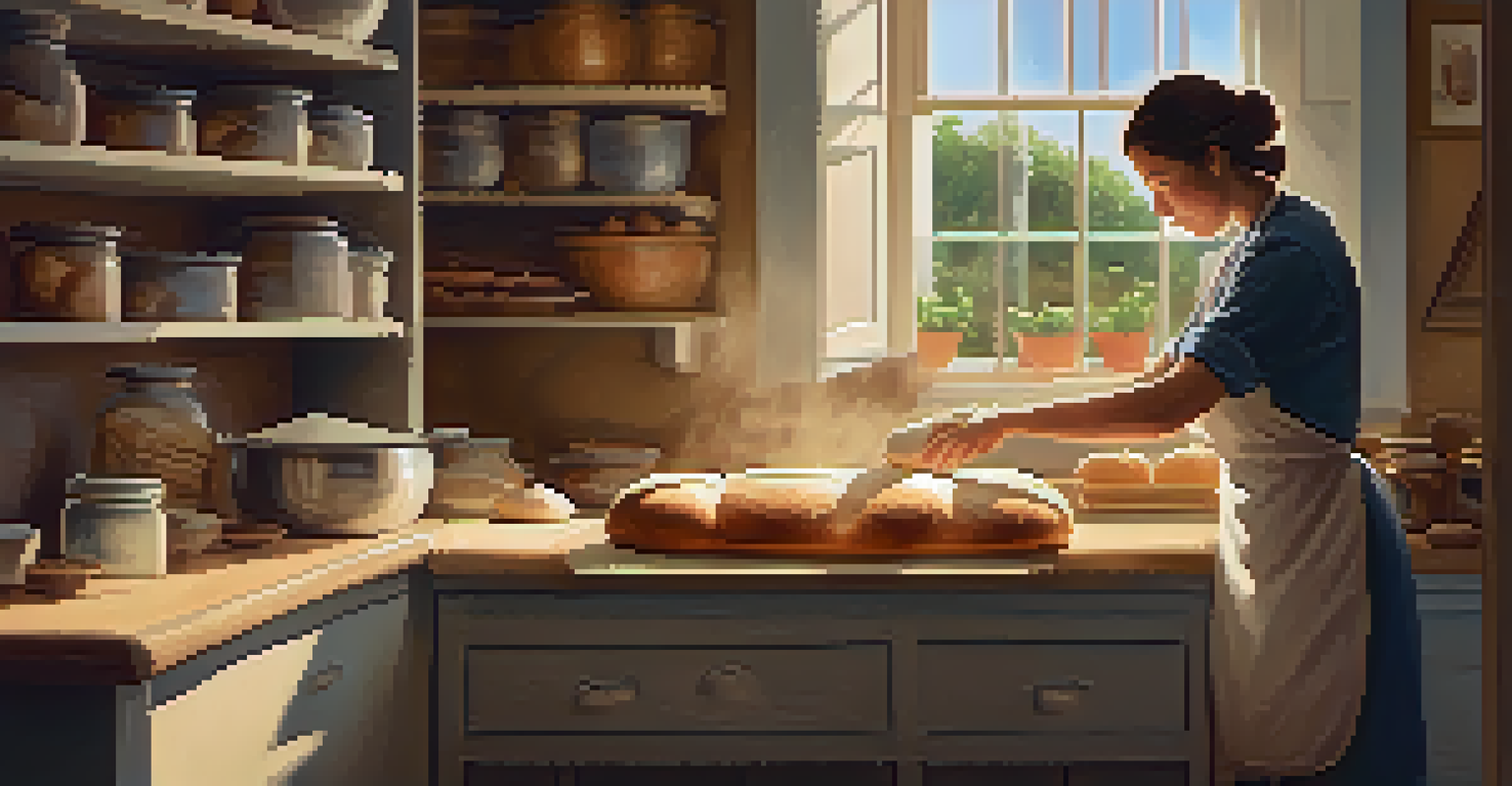The Basics of Baking Bread: Ingredients and Equipment Needed

Why Baking Bread is a Rewarding Experience
Baking bread at home is more than just a culinary task; it’s an art. The aroma of freshly baked bread can fill your home with warmth and comfort, creating an atmosphere that welcomes everyone. Plus, there's something incredibly satisfying about kneading dough and watching it rise, transforming simple ingredients into a delicious loaf.
Baking bread is an act of love, and it nourishes both body and soul.
Not only does homemade bread taste better than store-bought, but you also have complete control over what goes into it. You can experiment with flavors, adjust ingredients for dietary preferences, and make it as healthy or indulgent as you like. Baking bread can serve as a delightful stress reliever, giving you a moment to focus on something tangible and rewarding.
Whether you're a novice in the kitchen or a seasoned baker, the process of making bread can be both educational and enjoyable. So, let’s dive into the basics of what you need to get started on your bread-baking journey!
Essential Ingredients for Baking Bread
At the heart of every bread recipe are the key ingredients: flour, water, yeast, and salt. Flour provides the structure and sustenance for bread, while water activates the gluten, giving bread its chewy texture. Yeast is the magic ingredient that helps the dough rise, creating those delightful air pockets, and salt enhances flavor while also regulating the fermentation process.

While these are the basic ingredients, you can get creative! Many bakers add sugars for sweetness, fats like butter or oil for richness, and various seeds or grains for texture and flavor. Each ingredient plays a role, so understanding their functions can help you troubleshoot and improve your baking skills.
Baking Bread is an Art
The process of baking bread transforms simple ingredients into a satisfying and aromatic experience that fills your home with warmth.
For a perfect loaf, the quality of your ingredients matters. Opting for high-quality flour and fresh yeast can significantly affect the final product. So, consider investing a bit more for better ingredients; your taste buds will thank you!
Understanding Different Types of Flour
Flour is not just flour; there are various types, each suited for different kinds of bread. For instance, all-purpose flour is versatile and a great starting point for beginners, while bread flour has a higher protein content, making it ideal for chewy loaves. Whole wheat flour offers a nuttier flavor and is more nutritious, but may require adjustments for hydration.
Good bread is the most fundamentally satisfying of all foods; and good bread with fresh butter, the greatest of feasts!
When choosing flour, consider the end goal of your bread. If you're making a soft sandwich loaf, you might stick with all-purpose or bread flour. If you're interested in artisan-style crusty bread, incorporating a bit of whole wheat flour could enhance flavor and texture.
Experimenting with different flours can be a fun way to discover new tastes and textures. Don’t hesitate to blend flours to create your unique mix; after all, baking is all about creativity!
The Role of Yeast in Bread Baking
Yeast is the secret ingredient that transforms your dough from a mere mixture to a fluffy loaf. This living organism consumes sugars and produces carbon dioxide as a byproduct, which is what causes the dough to rise. Understanding how yeast works can greatly enhance your baking skills.
There are two main types of yeast: active dry yeast and instant yeast. Active dry yeast needs to be dissolved in water before use, while instant yeast can be mixed directly into the dry ingredients, making it a convenient option for many bakers. Each type has its own pros and cons, so choose one based on your recipe and preferences.
Key Ingredients Matter
Flour, water, yeast, and salt are essential for bread, and using high-quality ingredients significantly impacts the final product.
Don’t forget about the importance of proofing your yeast! Ensuring it’s alive and bubbly before you start mixing your dough can make all the difference in the final rise of your bread.
The Importance of Salt in Bread Making
Salt is often an overlooked ingredient, but it plays a crucial role in bread making. Not only does it enhance the flavor of your bread, but it also strengthens the gluten structure, which helps retain the gas produced by the yeast. This results in a better rise and texture in your loaf.
However, too much salt can inhibit yeast activity, so it’s vital to balance your ingredients. Typically, a good rule of thumb is to use about 1.5 to 2% of the total flour weight in salt. Measuring carefully ensures that your bread rises beautifully without compromising flavor.
In addition to flavor and structure, salt also acts as a preservative, extending the shelf life of your bread. So, while it may seem small, don’t underestimate the power of salt in your bread recipes!
Essential Equipment for Baking Bread
To bake bread successfully, a few key pieces of equipment can make your life much easier. A good mixing bowl, a sturdy countertop for kneading, and a baking sheet or loaf pan are essential. Additionally, investing in a kitchen scale can help you measure ingredients accurately, leading to more consistent results.
A bench scraper is another handy tool that helps you manage sticky dough, while a proofing basket can help shape your loaves. Don't forget about a good oven thermometer! Home ovens can often be off in temperature, and having an accurate reading can prevent baking disasters.
Essential Equipment for Success
Having the right tools, like a mixing bowl, kitchen scale, and baking stone, can enhance your bread-baking experience and ensure consistent results.
Finally, consider investing in a baking stone or Dutch oven for that perfect crust. These tools will elevate your bread-baking game, allowing you to create bakery-quality loaves right in your kitchen.
Baking Bread: The Basic Steps to Follow
With your ingredients and equipment ready, it’s time to dive into the basic steps of bread baking. Start by mixing your dry ingredients together, then add the wet ingredients and knead until smooth. Kneading is crucial as it develops the gluten, giving your bread structure and chewiness.
After kneading, allow your dough to rise in a warm place until it doubles in size. This process, known as fermentation, not only helps with the rise but also develops flavor. Once it’s risen, you’ll punch it down, shape it, and then let it rise again before baking.

Finally, preheat your oven and bake according to your recipe's instructions. The smell of baking bread is unparalleled, and once your loaf is golden brown, it’s time to let it cool before slicing. Enjoy the fruits of your labor!